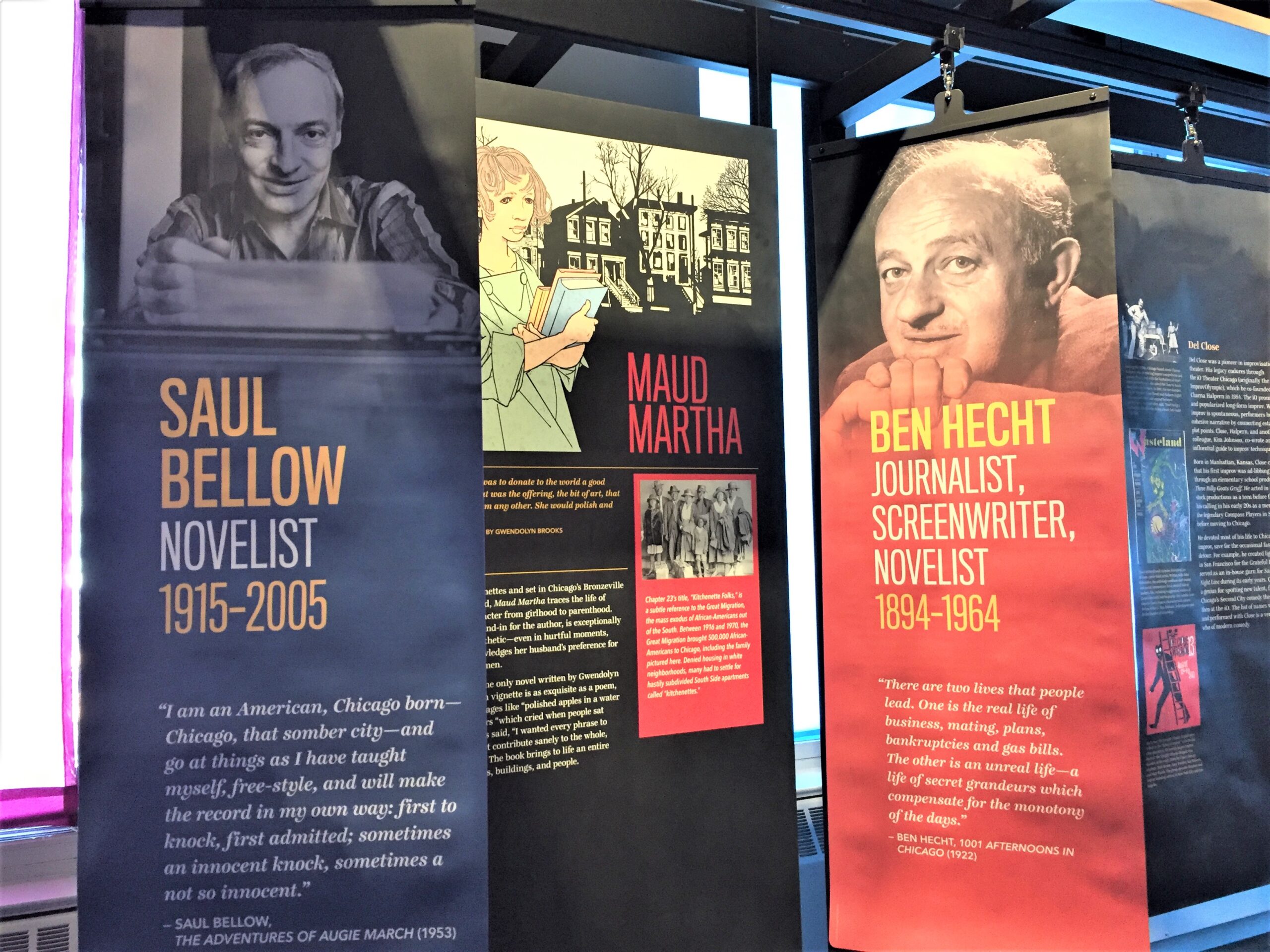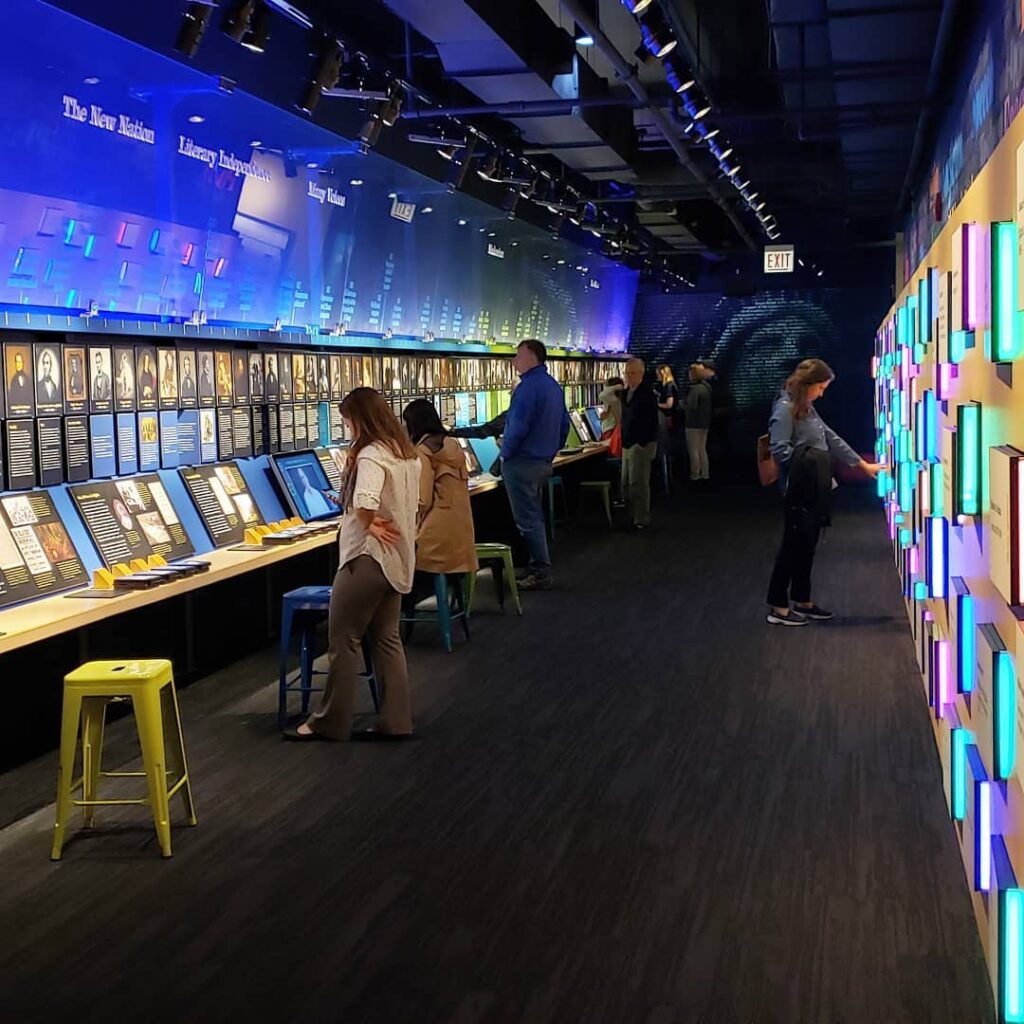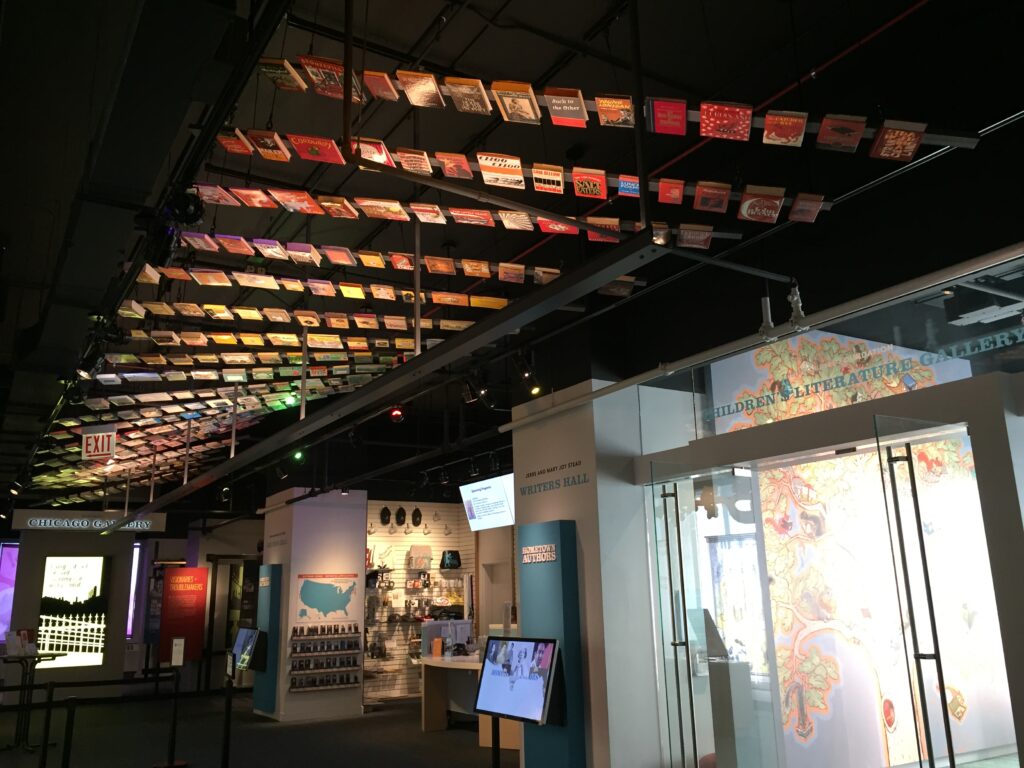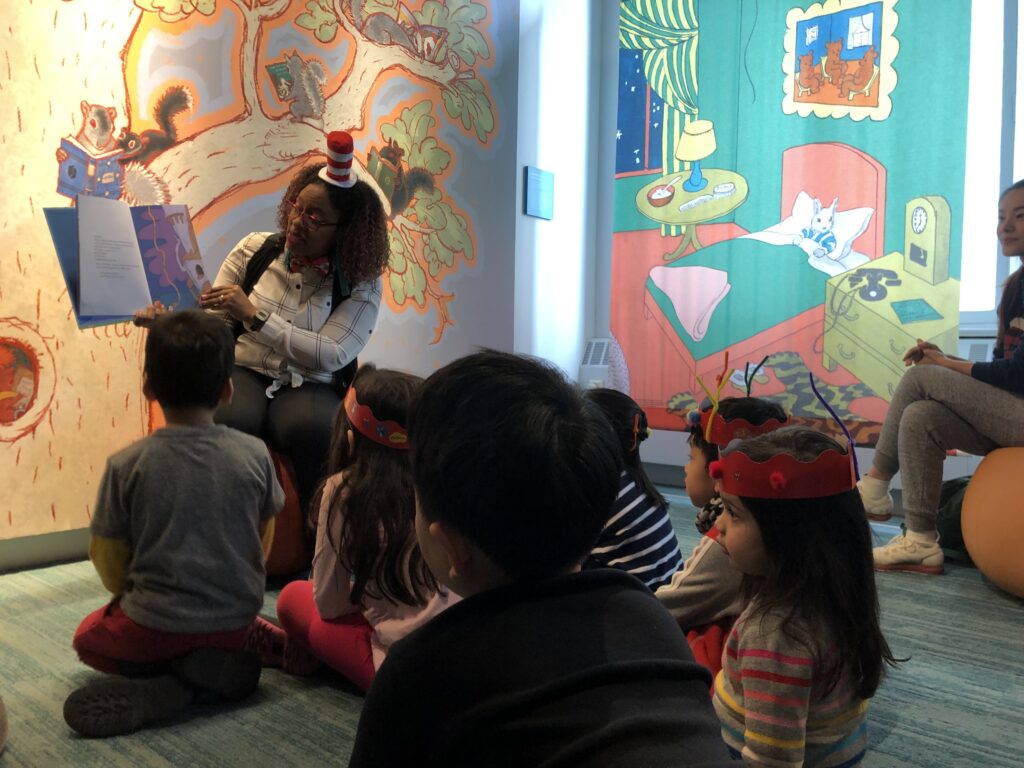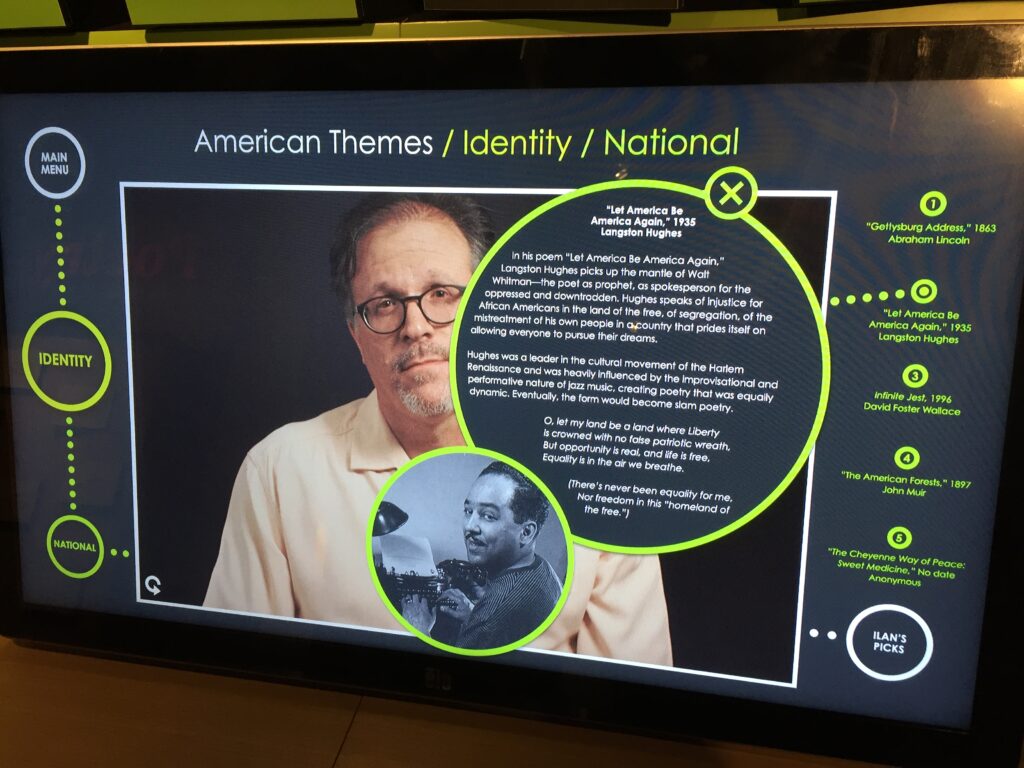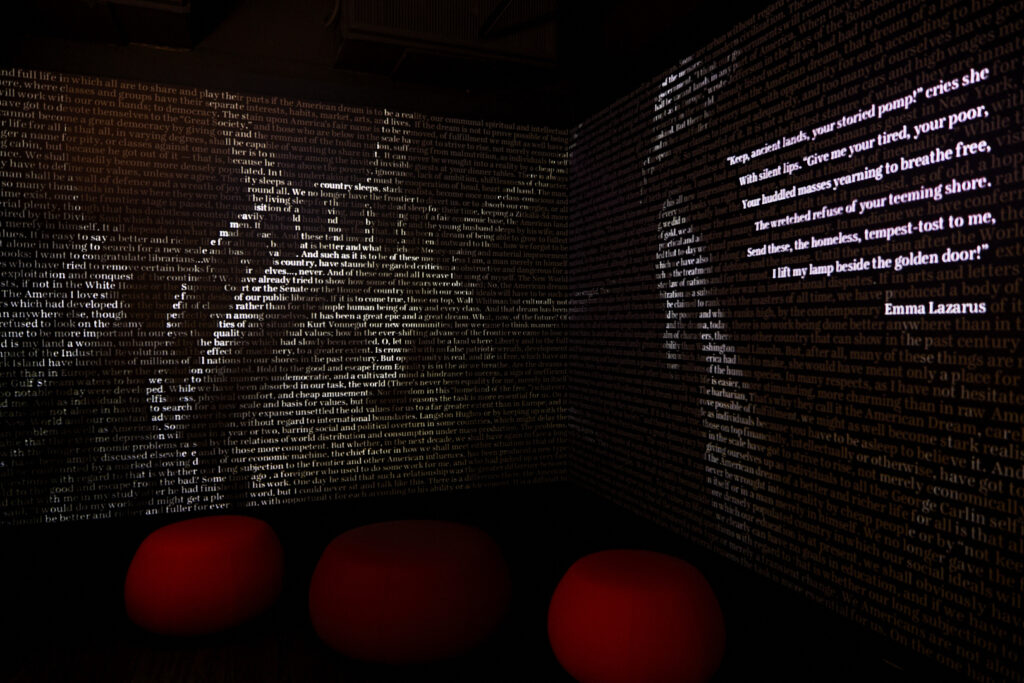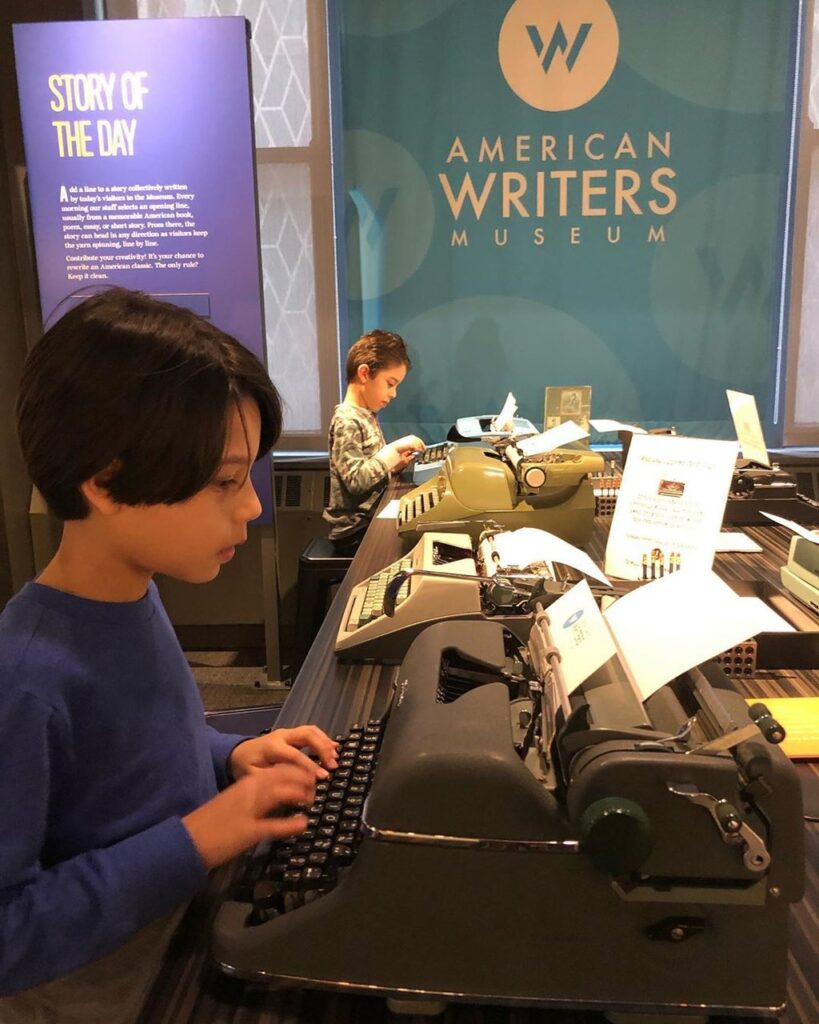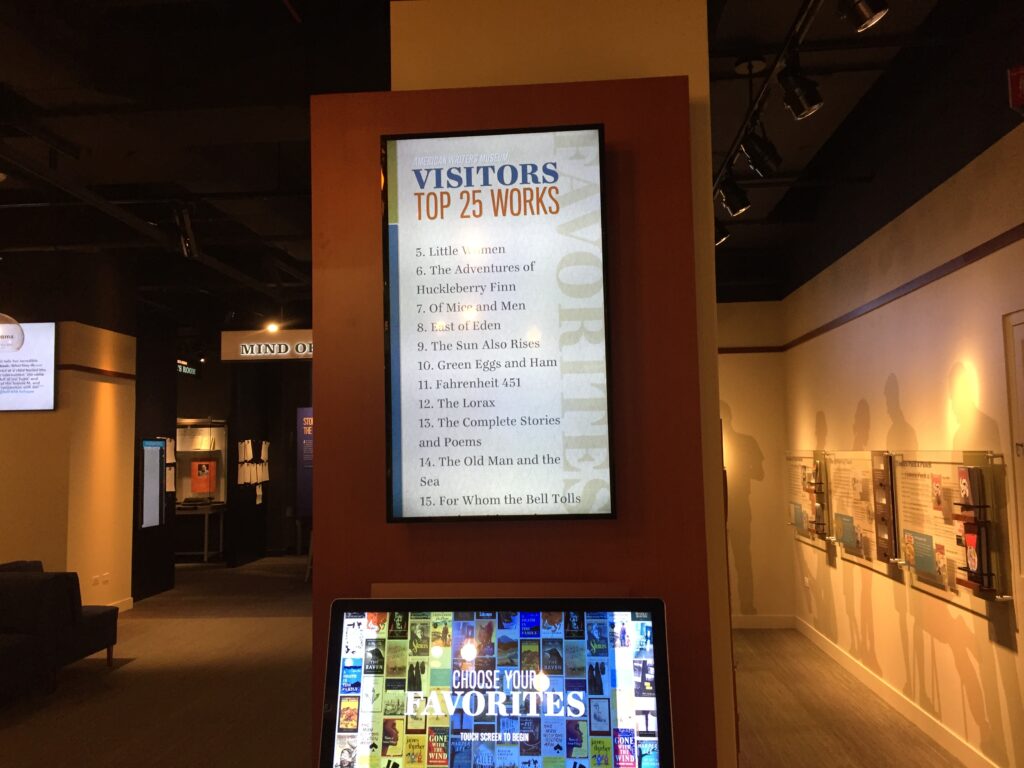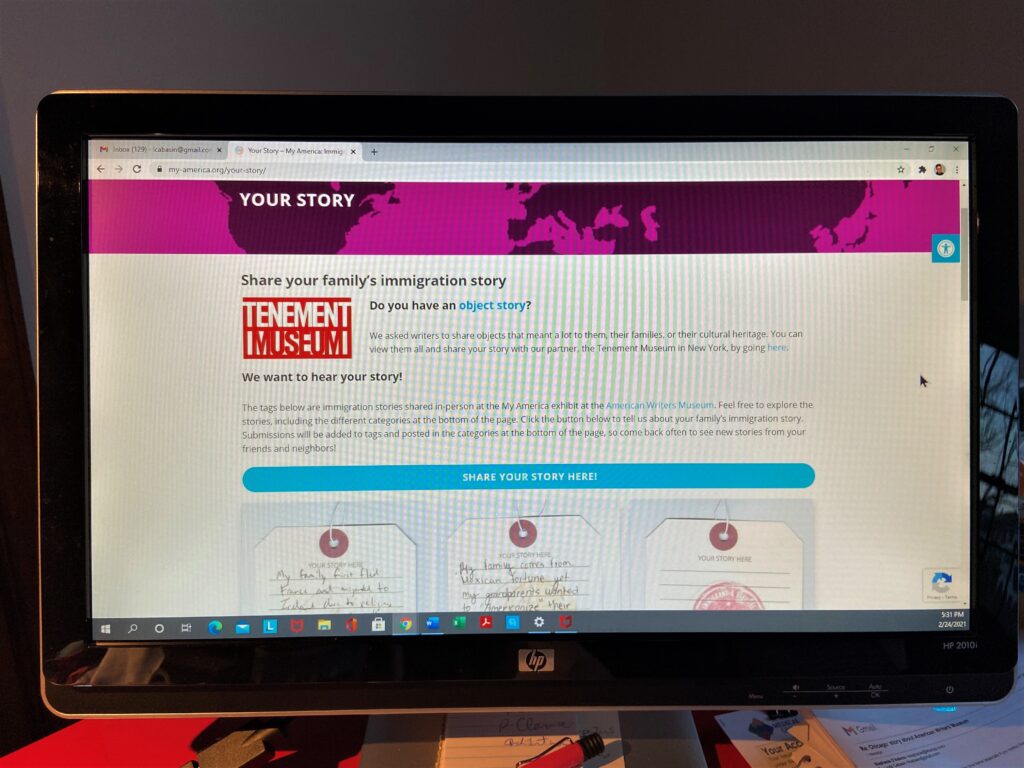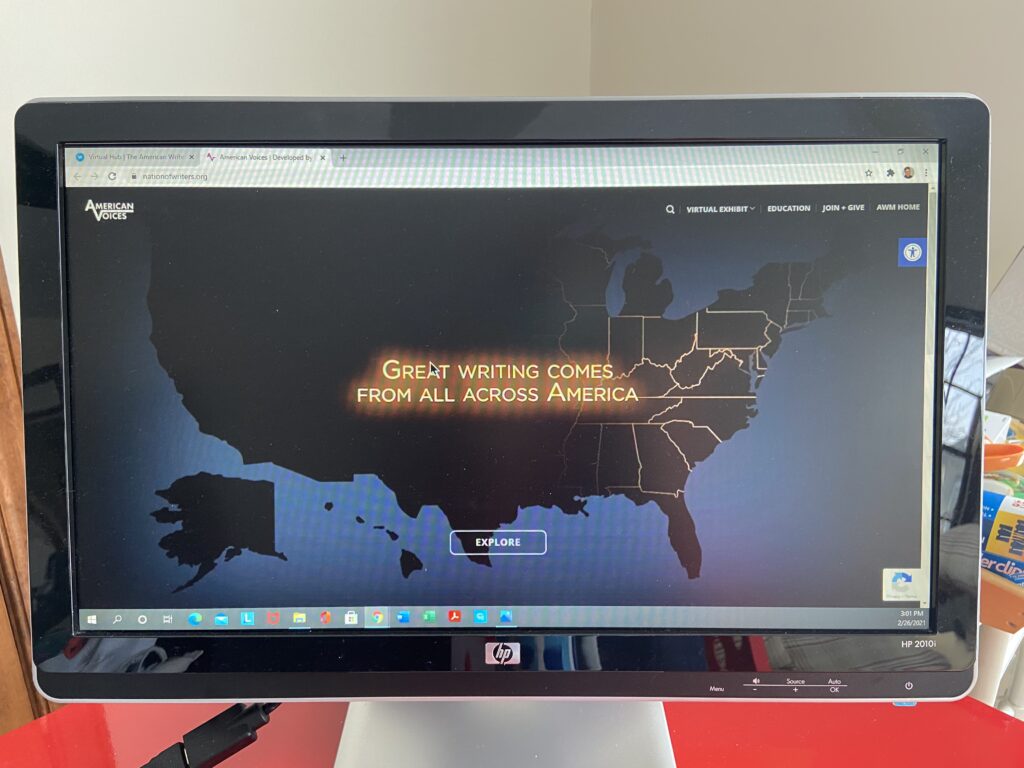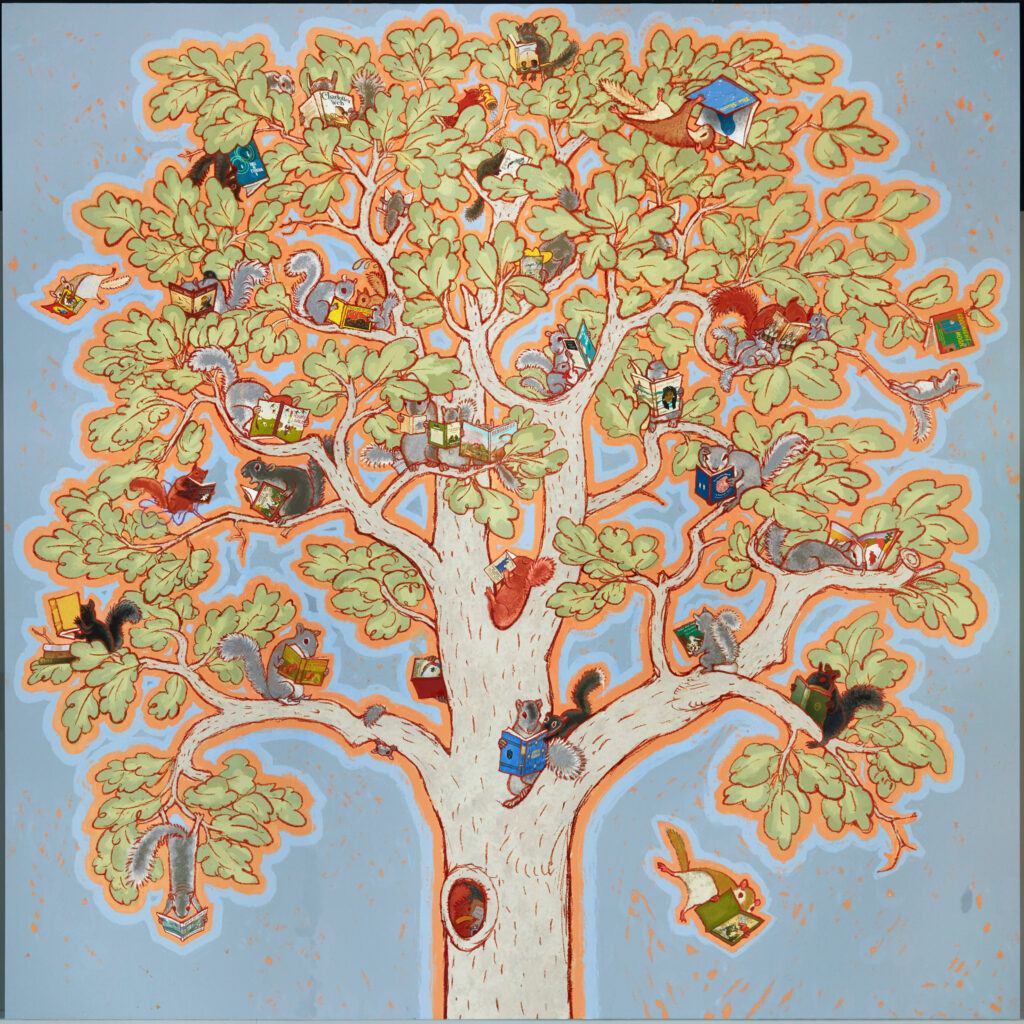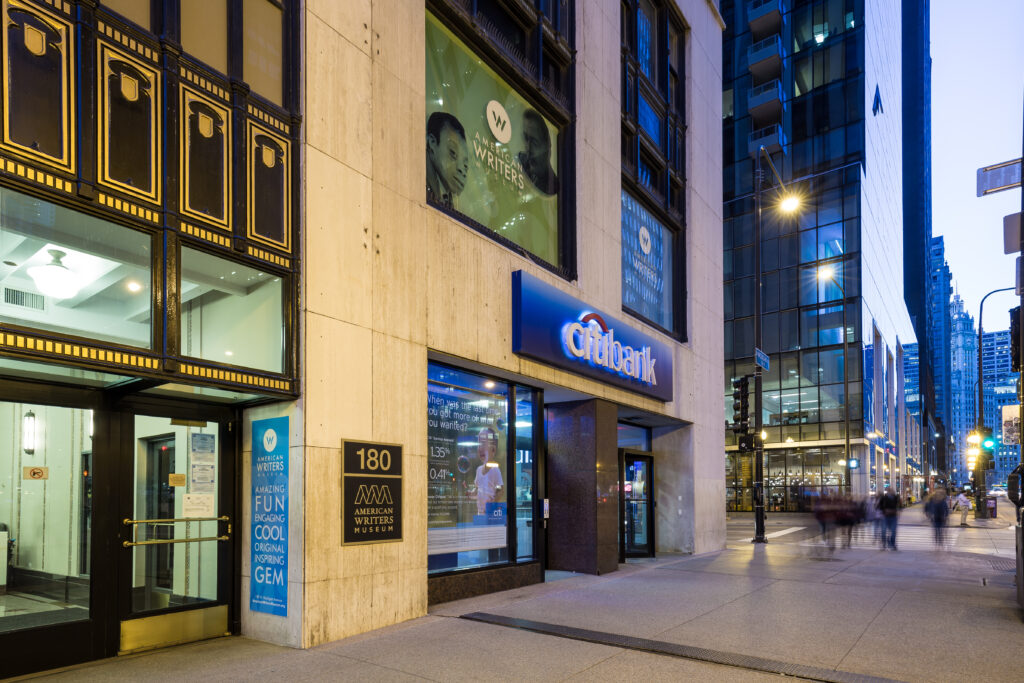Colorful displays, touch screens, and videos are some of the surprises at the American Writers Museum (AWM) in Chicago, an engaging celebration of writers past and present. Unique of its kind in America, the AWM explores how writers from different backgrounds and regions have helped shape American history and identity. Rather than a bookish archive or scholarly retreat, the museum is designed for the public. Its interactive exhibits, special programs, and events with authors inspire people of all ages to take a fresh look at writing and reading—and possibly write themselves.
Currently closed due to Covid-19, the AWM plans to reopen on May 14 (check the website for updates) at its site on the second floor of a building in the Loop. This spring, it will debut an online and on-site exhibit called Ray Bradbury: Inextinguishable, about the famous author of the novel Fahrenheit 451. Programming at the museum about the novel will be part of the National Endowment for the Arts Big Read. In the meantime, a virtual hub and social media content are great ways to discover the AWM.
The idea for the American Writers Museum came from Malcolm O’Hagan, a retired American engineer and executive who was born in Ireland. A lover of literature, he conceived the idea after visiting the Dublin Writers Museum in Ireland. O’Hagan believed, though, that an American museum should take a less traditional approach instead of focusing on writers’ manuscripts and memorabilia. From 2009 until the AWM’s opening in 2017, the idea evolved with the creation of a content team, selection of a city and site, and museum design. Key goals were to represent a variety of American writers and writing and to include the voices of under-represented groups.
Visiting the Museum—In Chicago and Online
Although the American Writers Museum is compact—about 11,000 square feet—and can be explored in an hour or two, its spaces are packed with discoveries. A permanent exhibit, A Nation of Writers, is a browsable, interactive timeline with panels, boxes, and screens displaying information about 100 authors from the 1600s to today. The genres of writing here include everything from speeches (Patrick Henry, for example) to poetry (Emily Dickinson) to novels (James Baldwin). The exhibit looks at how American writing became distinctly American, highlighting writers who reflect America’s energy and hopefulness as well as its conflicts and disappointments. The Chicago Gallery explores Chicago writers as visionaries, social critics, and troublemakers. The writers are as diverse as playwright Lorraine Hansberry, advice columnist Ann Landers, and journalist Mike Royko.
The Children’s Literature Gallery offers families with young children a cheerful reading area with a mural by illustrator Paul O. Zelinsky and displays about famous children’s books. Other exhibits include the Readers Hall, with information about what American have read over the years. The Mind of a Writer Gallery looks at the habits writers develop and engages visitors with word games and touch tables that explore American masterpieces.
Although a visit to Chicago and the AWM is ideal, the museum has developed excellent online resources for a broad community of readers and writers. In American Voices, the digital version of the exhibit A Nation of Writers, users explore a timeline, covering periods such as Colonial Visions & Revolution and Modernism, to learn about writers. Interesting facts are highlighted for each: James Fenimore Cooper, for example, was famous in Europe, and the composer Franz Schubert asked friends for copies of Cooper’s novels.
Another way to explore American Voices is by looking at sections called Identity, Edge, and Promise, themes central to the works of many American writers. An excellent short video introduces each theme, followed by additional videos and an annotated reading list. The Edge section, focusing on writers who question mainstream ideas and create new literary forms, identifies Edgar Allan Poe as the founder of this tradition. His 1841 story “The Murders in the Rue Morgue” is considered the first detective story, one centered on psychology. Poe called this kind of story “a tale of urban shock.” Other writers who pushed the edge in creating new forms and styles were Gertrude Stein, Ralph Ellison, and Norman Mailer.
Two other virtual exhibits reflect the diversity of the museum’s programming. My America: Immigrant & Refugee Writers Today, based on an AWM exhibit, has videos of contemporary writers who discuss their experiences in America. Videos cover topics such as why they write and what it means to be an American. Viewers can share their own immigration story, writing about an object or experience. Frederick Douglass: Agitator, an exhibit presented in 2018–2019, explores the life and words of the 19th-century author and orator who escaped from slavery and fought for equality for all Americans.
Podcasts and YouTube videos keep listeners in touch with leading and upcoming writers of fiction and nonfiction, poetry, television, and more. Readers and writers can also check the AWM’s blog for information and reading recommendations.
An important part of the AWM’s audience are teachers and students in grades 3–12—about 7,000 students visit annually. Educational resources about the virtual exhibits are available to teachers, parents, and students. A new interactive online education program offers virtual field trips with live guided exploration of different exhibits.
Whether a visit is online or in person, the American Writers Museum is a lively place to explore the worlds of American writers, expand a reading list, and rediscover the joy of reading.
Side Dish
Convenient to the American Writers Museum as well as Millennium Park and the Art Institute of Chicago, The Gage is a comfortable, pub-like space—there’s also a heated patio—serving delicious, updated North American classics from seafood stew to burgers. The beer list is excellent. If a quick bite is needed, the Loop location of local favorite Do-Rite Donuts has coffee and treats like a blueberry crumb or Valrhona chocolate cake doughnut.
Linda Cabasin is a travel editor and writer who covered the globe at Fodor’s before taking up the freelance life. She’s a contributing editor at Fathom. Follow her on Instagram and Twitter at @lcabasin.

